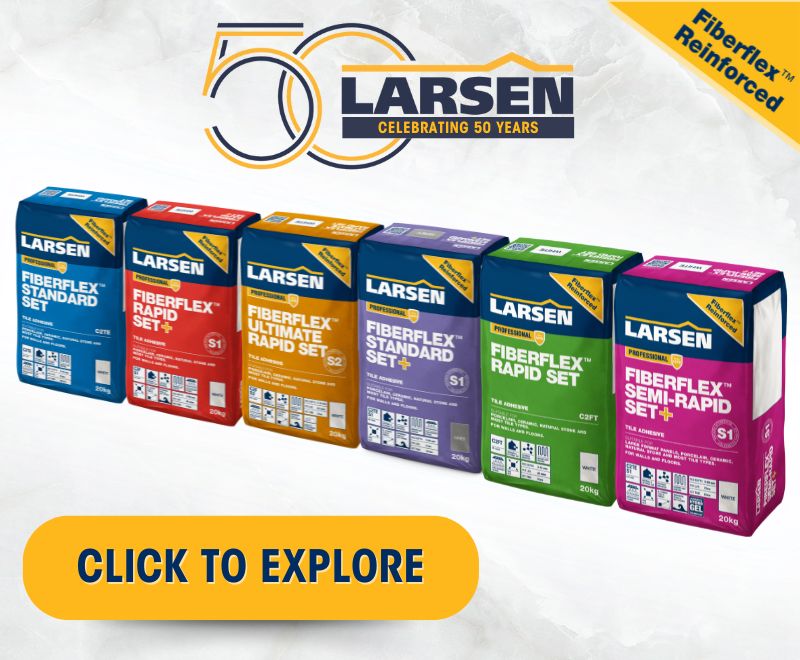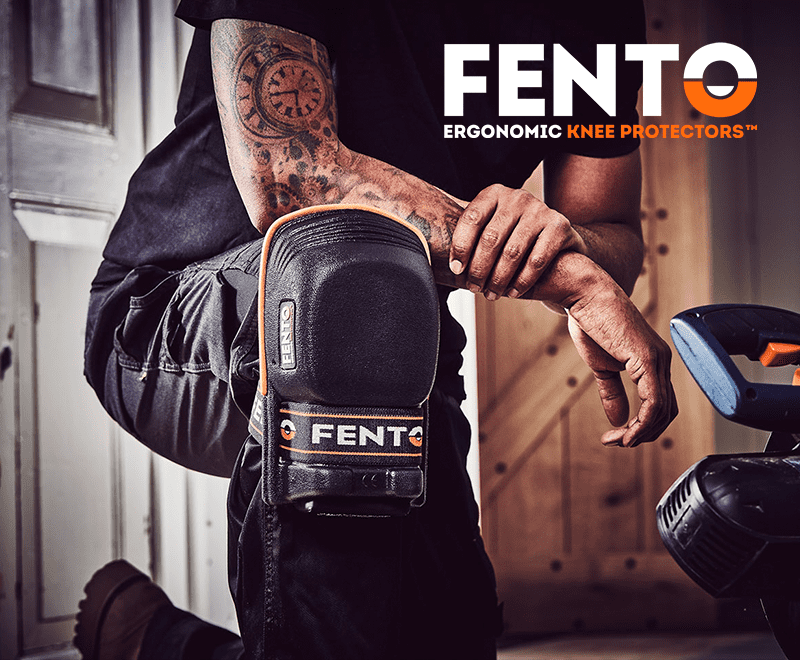Jim Percival, technical director, at Palace Chemicals, explains how to use tile adhesives correctly when installing underfloor heating systems
Underfloor heating (UFH) systems have been around since Roman times but have enjoyed exponential growth in recent years. Industry estimates indicate the market is virtually doubling annually, as they’ve increasingly been incorporated into renewable energy heating installations to enable properties to meet modern sustainability requirements. Jim Percival, technical director at Palace Chemicals, considers the implications of tiling installations where UFH systems are involved.
Selection of the correct adhesive is a critical consideration for tilers working around UFH systems, and the most important recommendations are contained in the British Standard BS 5385-3:2024: C.7. – “Tiling onto underfloor heated substrates,” which provides a comprehensive overview of the types of UFH likely to be encountered by tilers and section C7.1 provides guidance on the types of adhesives and grout to be selected for these surfaces.
Selecting an adhesive capable of withstanding changes owing to thermal effects, is the key consideration – the adhesive and grout must be able to cope with thermal movement to ensure a successful installation.
The Standard states: “The selected adhesive should be capable of withstanding changes owing to thermal effects, in particular conduction of heat through the substrate to the tiled finish and associated movement owing to thermal gradients. The suitability of the tile adhesive should be checked with the adhesive manufacturer before work commences onto heated screeds.”
This section of the Standard details the factors which should be considered when selecting an adhesive:
“The selection of a suitable adhesive conforming to BS EN 12004 1 is also dependent on factors including the:
a) type and size of the tiles and slabs selected;
b) type and operating temperatures of the underfloor or undertile heating selected;
c) floor construction and the type of heated substrate, e.g. heated screeds or timber;
d) type of proprietary board and the construction for use with undertile floor heating; and
e) service conditions to which the tiling is exposed.”
In accordance with BS 5385-3:2024, a timber floor should be overlaid with a preparatory tile backer board or suitable decoupling membrane before tiling commences.
A suitable polymer-modified, standard or fast-setting cement-based adhesive should be used which conforms to BS EN 12004 1, having a minimum C1S1 classification, in accordance with the manufacturer’s recommendations.
When fixing large format floor tiles, which have a minimum edge length of 600mm, it can be advantageous to use a pourable thick-bed adhesive in order to achieve a solid bed and when installing ceramic, agglomerated stone and terrazzo tiles and panels, there should be no voids as far as practically possible, and regardless of their size, they should be fully supported and bonded to the heated screed by the adhesive, which should be trowelled out onto the substrate and back-buttered on the tile to ensure full contact. Further advice should be sought from the manufacturer to confirm the adhesives’ suitability.
When fixing light or translucent marble tiles adhesives incorporating grey Portland cement should be avoided and a white rapid setting EN12004 C2FT-S1 adhesive should be used to avoid discolouration or alkali effects, as rapid drying adhesive can be very beneficial where the stone is prone to water staining.
Given the foreseeable thermal expansion effects of a heated subfloor, the need for movement joints to be incorporated into the tiled surface, especially in larger areas, is particularly important, as this will allow for thermal expansion and contraction (See Annex C2 of BS5385 Part 4. For detailed guidance on the arrangements of joints on these surfaces). The finished floor should have movement joints as frequent as at 5m centres in horizontal directions and there’s also a requirement for a sufficient gap
(> 6mm) around the perimeter of the room to accommodate a fully embedded movement joint. These can be hidden using skirting boards or trims.
Regarding grout selection, the use of rapid setting, mould resistant, lime-free grout will prevent efflorescence and provide a more stain resistant, smooth-textured surface capable of withstanding thermal movement. Polymer modified cement-based grouts should be selected and cement grouts should conform to BS EN 13888 1:2022, Class 2 (CG2WA).
Correct operation of the heating system before, during and after the tiling installation is important as well. Floor temperature should not exceed 15deg C during the tiling process. After the installation is complete, the adhesive manufacturer’s guidelines should always be followed. Also, when the heating system is first turned on, the temperature should be gradually increased over the next 10 – 14 days to its recommended operating level to prevent thermal shock to the tiles and adhesive.
The tiles themselves need to be compatible with the type of UFH system that’s being installed. They should have equivalent thermal conductivity, whereby the coefficient of linear thermal expansion of the tiling should not be too dissimilar to that of the heated subfloor, otherwise excess stresses may be created. As most tiling will normally be of ceramic, porcelain, or natural stone these have very similar coefficients of thermal expansion to hard substrates they’re fixed to and will effectively transfer heat from the heating system to the room. Remember that larger and thicker tiles may take longer to heat up but will retain heat longer once warmed. g
www.palacechemicals.co.uk










